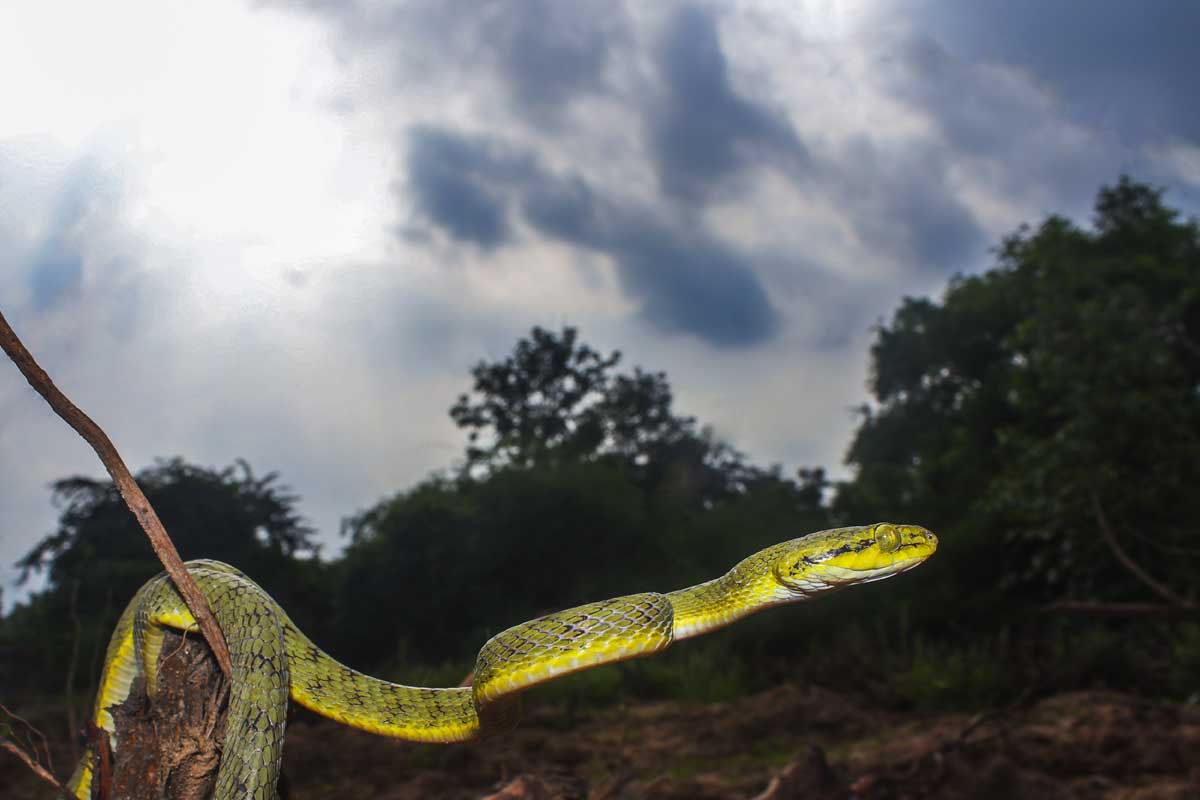

Image credits: Eastern Ghats Wildlife Society
Snakes and humans have developed a bad rapport over the past few decades. It’s instinctive that a human kills a snake on seeing it, irrespective of whether it is venomous or not. A vast majority of the snake species are non-venomous and harmless. However, the common perception is that all snakes are venomous. So, to educate each other, World Snake Day is celebrated annually on 16 July at Vizag and the rest of the world. This day also marks an important contribution to the cause of conservation of these sometimes dangerous, but mostly misrepresented, reptiles.
Yo! Vizag celebrates World Snake Day 2021 by getting in touch with Mr Murthy Kantimahanti, a Conservation Practitioner at Eastern Ghats Wildlife Society (EGWS), Visakhapatnam, to decode the venomous snakes of India. He also threw light upon the lesser-known facts about snakes and educated us on the symptoms, and first aid to be taken, when a venomous snake bites.
There are over 300 species of snakes in India. However, only a few of them can be distinguished and identified as venomous or non-venomous. To start off with, here are the four main venomous snakes species that need special concern, especially in the Eastern Ghats region. Around 50 to 60 thousand people die every year because of these four snakes.
#1 Cobras
The cobras are widely identified with a hood that is widespread and predominant amongst them. Grabbing the top spot in the food chain of snakes, King Cobras are the only species that feed on snakes. King Cobras also control the population of venomous snakes. They are distributed in the Western as well as the Eastern Ghats. In the Eastern Ghats, it is found in all three districts including Visakhapatnam, Vizianagaram, and Srikakulam.
#2 Russell’s Viper
Vipers have triangular heads and can be distinguished by the markings on their bodies. They have chain-like diamond-shaped markings. It belongs to the Viperidae family that is a native of the Indian subcontinent. Russell’s Viper is haemotoxic, which means the venom acts on blood.
#3 Common Krait
This species of snake is most active during the night. It’s a very small snake compared to the others but is very toxic. The Common Krait can be distinguished by white ring-like markings along the body and more prominent on the tail. The whole species looks blackish or bluish. The Krait’s venom is neurotoxic, which means the venom acts on the nerves and the central nervous system.
#4 Saw-scaled Viper
This species exactly looks like Russell’s Viper but the colouration is different. The vipers are named Saw-scaled as they have a pattern like the teeth of a saw all along the body and an arrow-shaped mark on the head. They can easily be identified by their size as they are very small. An adult Saw-scaled Viper doesn’t grow larger than one foot. They can be found in predominantly dry areas.
On the occasion of World Snake Day 2021, here are some facts that people of Vizag should know:
Within 15-20 minutes of a snakebite, the first symptom that it is venomous is that it starts painting severely. This is followed by swelling, vomiting sensation and discolouration of the part the snake has bitten.
In the case of a non-venomous snake bite, one can find teeth marks. It leads to external wounds and severe bleeding but doesn’t result in pain.
Yo Vizag also spoke to Mr Rahul Pandey (IFS), Chief Conservator of Forests (Wild Life), Government of Andhra Pradesh to know about the conservative initiatives to protect snakes.
The Forest Department of the Government of Andhra Pradesh, Eastern Ghat Wildlife Society (EGWS), and Madras Crocodile Bank Trust (MCBT) have come together to work towards the conservation of King Cobras. These organisations have identified that the King Cobras come close to residential areas in villages and have been killed. The primary object was to reduce the response time. Awareness programmes were conducted to immediately notify on identifying a King Cobra. Teams have been arranged to rescue the snake and leave it in the forest. This initiative began in the year 2018, and within 3 years, over 25 King Cobras have been rescued. These three organizations also rescue and protect other snakes.
This post was last modified on 16/07/2021 9:20 pm
The atmosphere in Vizag is truly unpredictable. In the morning, it might rain heavily, soaking…
In a first-of-its-kind initiative, proposals have been finalized for the launch a unique Anti-Drug Awareness…
News of rising COVID-19 cases has been making headlines again. Hong Kong, Singapore, and parts…
Dalli Govind Reddy, a corporator from the Jana Sena Party representing the 64th division, has…
Job seekers in Andhra Pradesh have a new opportunity coming their way as the Department…
Starting 20 May 2025, the Visakhapatnam Steel Plant (RINL-VSP) will witness industrial action as both…
Leave a Comment